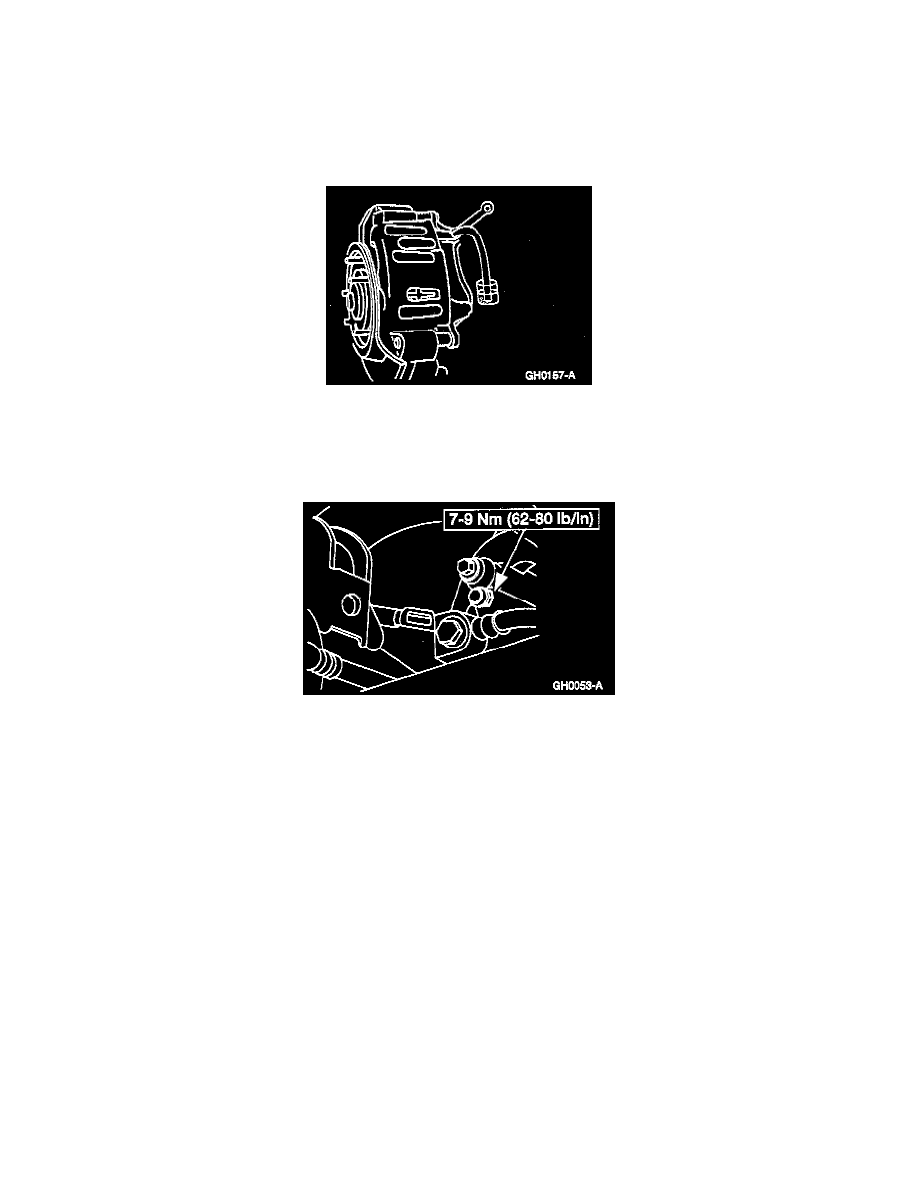Explorer 2WD V6-245 4.0L SOHC VIN E EFI (1997)

^
One conventional pressure bleed cycle consists of advancing the brake pedal to its extended position, opening the rear disc brake caliper bleeder
screw, allowing fluid to be released into the waste container, closing the rear disc brake caliper bleeder screw, and releasing the brake pedal to its
full upright position.
^
When any part of the hydraulic system has been disconnected for repair or replacement, air may get into the system and cause spongy brake pedal
action. This requires the bleeding of the hydraulic system after it has been properly connected. The hydraulic system can be bled manually or with
pressure bleeding equipment Brake Bleeder.
^
Add recommended brake fluid as necessary throughout the procedure.
Placing Wrench On Front Disc Brake Bleeder Screw
1. Connect a clear waste line to the RH rear disc brake caliper bleeder screw and place the other end in a container partially filled with recommended
brake fluid.
2. With the RH rear disc brake caliper bleeder screw open, cycle the brake pedal until no more air is seen in the waste line.
Tightening Rear Bleed Screw
3. Close the RH rear disc brake caliper bleeder screw and disconnect the waste line.
4. Repeat steps 1, 2, and 3 for the LH rear disc brake caliper bleeder screw, the RH front disc brake caliper bleeder screw, and the LH front disc
brake caliper bleeder screws.
NOTE: Performing the NGS program routine drives entrapped air from the otherwise inaccessible lower section of the 4WABS valve into the
upper sections (accessible by bleeding the brakes). Subsequent bleeding removes the air from the system.
